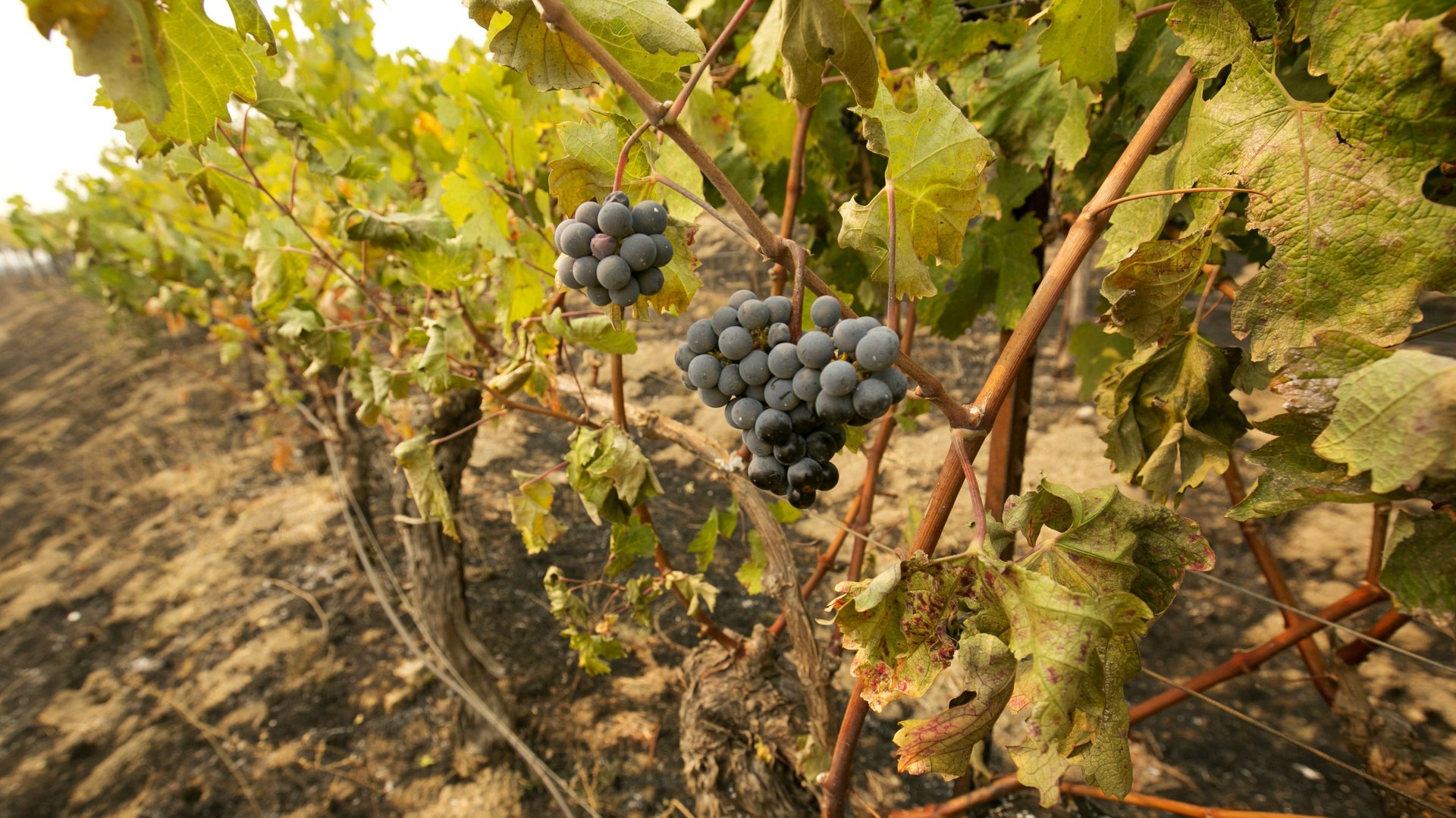Creeping wildfire smoke is a threat to California wines that people can actually taste
As deadly wildfires in northern California rage through wine country, vintners are staring down a quiet and familiar threat.


As deadly wildfires in northern California rage through wine country, vintners are staring down a quiet and familiar threat.
Even if their vineyards are spared from flames, thick smoke drifting through rows of vines poses a problem not just for those who harvest the grapes, but for the wine itself. That’s because woodland smoke contains several compounds—including esters, carbonyls, phenols, and organic acids—that can be absorbed through the leaves and eventually make their way to the thin epidermal layers of grapes. Vintners calls this “taint,” because it gives the resulting wines a smoky taste. In cases of greater concentration, the texture of the wine can feel rough on the back of a person’s throat.
Vineyards in California faced this issue back in 2008, after wildfire smoke lingered in wine country, trapped by dense marine air. As one vintner at the time put it to Wines & Vines magazine, “We experienced every plague except the locusts: Twenty-one freezing nights, little water, wind during flowering, a heat spike in May, wildfires in June and July, frost again during harvest and a heavy rain during crush. We’ve overcome every challenge except the smoke,” the vintner said.
There is no indication that impacted wines have an adverse effect on human health.
Vintners do have complicated ways to refine their wines, removing much of the smoky flavor, however that’s easier to do with lighter wines, such as chardonnays, than darker ones such as a pinot noir That’s because pinot noir requires that grape juice remain in contact with grape skins longer than lighter wines.